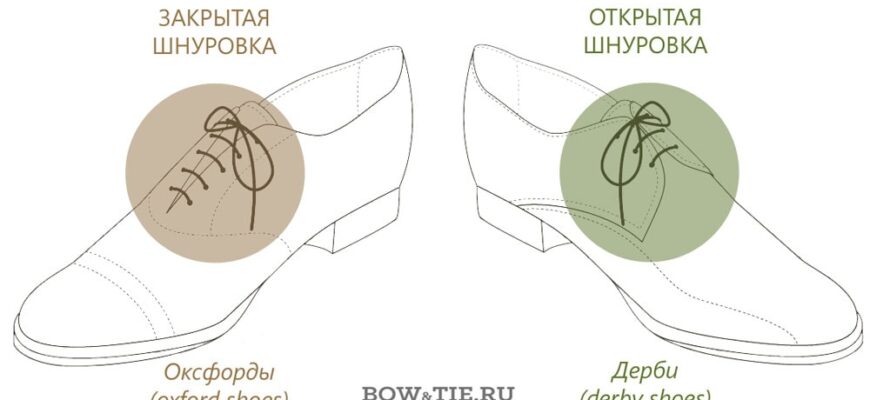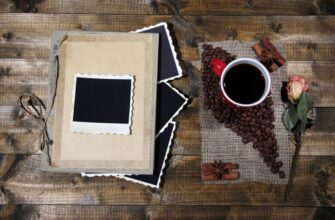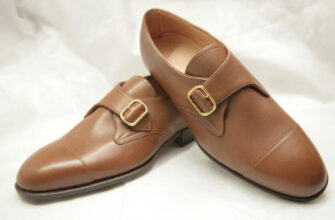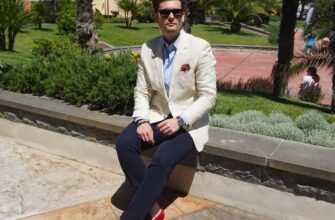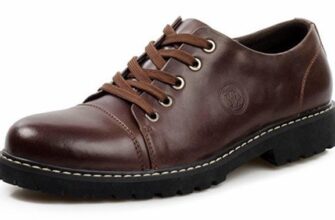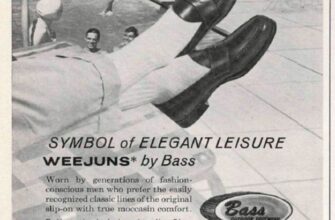One of the most important parts of a man's wardrobe is footwear. In the classic version, men's shoes are leather shoes of various styles and trends. Today we will analyze perhaps the most popular type of classic men's shoes – Derby shoes and Blucher.
Like any other item of men's wardrobe, shoes are divided into styles and correspond to different dress codes. We have already considered men's classic shoes in one of the articles, but today we will dwell on Derby and Blucher in more detail. These shoes are less formal than Oxfords, but more formal than monks or loafers.
Most men will notice that Derby and Oxford are very similar, but this is not entirely true. The main difference lies in the different lacing principle. Oxfords have closed lacing, i.e. the vamp is sewn over the ankle boots. Derby and Blucher, on the other hand, have open lacing, i.e. Ankle boots are sewn over the vamp. See the illustration to fully understand the difference between open and closed lacing.
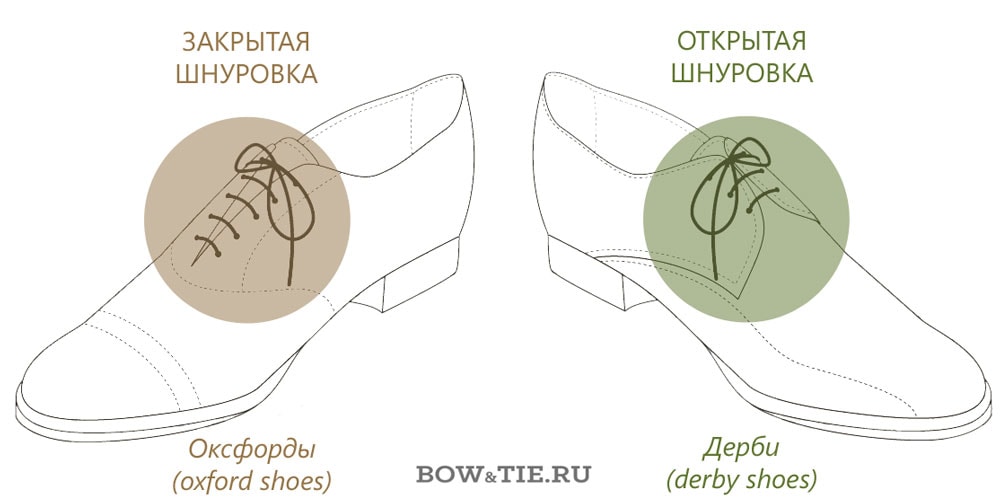
It is worth noting that between these two different lacing systems, closed lacing is more formal. Thus, the Derby is a less formal shoe with its open lacing. By the way, they are also more comfortable than Oxfords with their closed lacing.
Difference between Derby and Blucher
In the west, the terms 'Derby' and 'Blucher' are synonymous, due to the same open lacing system. However, there is a slight difference between the two. At Derby, the heel goes seamlessly into ankle boots, between which you can see the tongue from the vamp. In turn, at the Bluchers, ankle boots are sewn on top of the vamp and back.
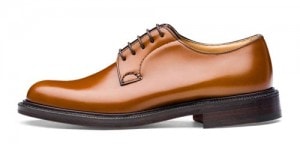
Blucher shoes
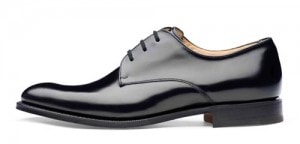
Derby shoes
Derby main features
- Open lacing.
- Consists of 3 parts: vamp and back, sewn together. Ankle boots, passing from the heel or vamp sewn on top.
- Open ankles.
Derby and Blucher story
The historical roots of Derby shoes are not entirely accurate. Some traces lead to the 12th Earl of Derby, a British peer and politician from the 18th-19th centuries who was a fan of horse racing. It was for him that the first Derby was made, in which it was comfortable to sit on a horse.
Other sources claim that the Earl of Derby 14th (namesake of the Earl of Derby 12th) had a rather large foot size (according to historians), which is why he needed shoes with comfortable lacing. Thus, his court shoemaker made boots with open lacing. The name of the shoe is 'Derby', first mentioned in the accounting records of 1862, but it was a description of the boots, not the shoes. It wasn't until 1872 that Derby shoes were detailed in the records of St. Crispin, the shoemaker of the church.
In the 19th century, the main footwear of cavalry and infantry in Europe was boots. Shoes of those times were not the most comfortable and practical, especially when it came to putting on and taking off boots. During the Napoleonic Wars, a Prussian officer by the name of Gebhard Leberecht von Blücher (Fürst von Wahlsett) took it upon himself to refine the boots, making them more practical and comfortable so that soldiers could quickly put on boots raised by alarm.
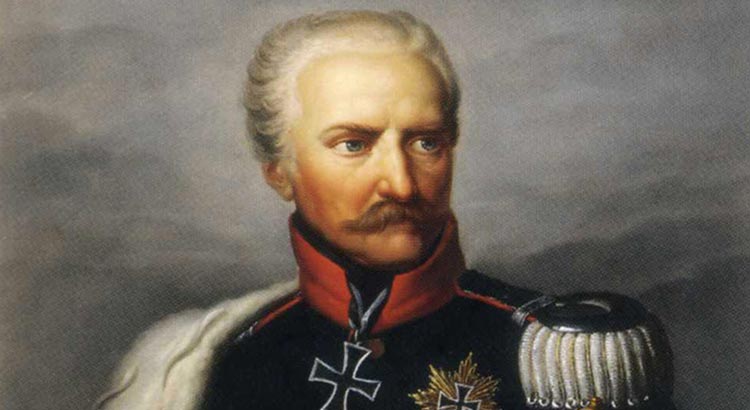 Gebhard Leberecht Blucher
Gebhard Leberecht Blucher
Officer Blucher has developed a system with two leather flaps (boot parts) below the ankle that are joined together when the shoe is laced up. This made the boots easier to put on and take off. In addition, by adjusting the tension of the lacing, it was possible to adjust the width of the boots for the thin and full legs of the soldiers.
By the way, Gebhard Leberecht Blucher and his soldiers played a key role in the defeat of Napoleon at the Battle of Waterloo. It is possible that comfortable shoes played an important role in this victory. No other shoe can boast such a history as the Bluchers, which were named after the field marshal of the Prussian army.
Derby varieties
Over the decades, Derby shoes have split into several subspecies. Conventionally, 3 can be distinguished: classic Derby, with a cut off nose, with perforation (Brogues).
Classic Derbies and Bluchers (The Plain Derby)
Regular Derbies consist of a one-piece heel and vamp (no seams) and ankle boots sewn on top. Classic Derbies do not have any embellishments (detachable noses, perforations, and so on). These Derbies are considered the most formal and businesslike and are usually made of black leather (although today you can find Derby of any color thanks to fashion trends). The more casual classic Derby is suede. In Central European countries, black lacquered Derby can be worn even with a Black Tie or White Tie dress code.
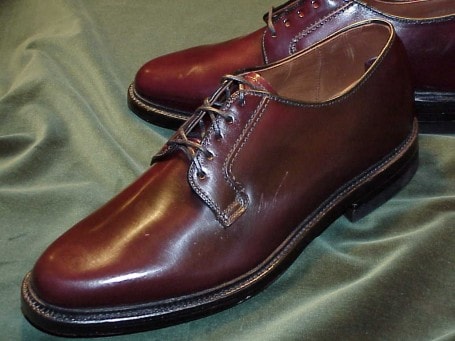 Vintage Lloyd & Haig Plain Front Derby
Vintage Lloyd & Haig Plain Front Derby  Vintage nettleton derby
Vintage nettleton derby 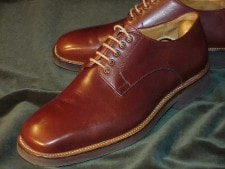 Sutor Mantellassi All-Weather Derby
Sutor Mantellassi All-Weather Derby
Derby with cut off toe (The Cap Toe Derby)
The Derby's 'cut off' toe is essentially a two-piece vamp sewn together with a seam running through the toe of the boot. Sometimes the sock is decorated with perforations. In terms of dress code, cut-toe derbies are slightly less formal than classic derbies.
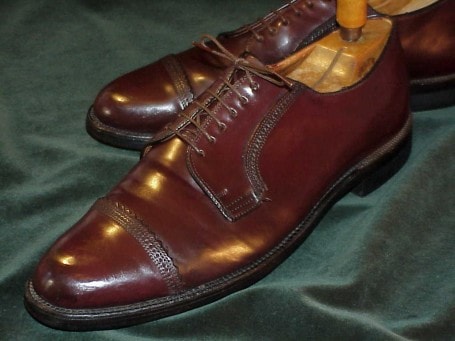 Vintage Cap-Toe Derby
Vintage Cap-Toe Derby  Vintage 1960 Lloyd Haig Cap-Toe Derby
Vintage 1960 Lloyd Haig Cap-Toe Derby 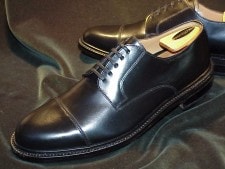 Lottusse Black Cordovan Derby
Lottusse Black Cordovan Derby
Derby with perforation or Brogue (The Wingtip Derby, Brogue)
This Derby look features a pointed toe and perforated leather trim. In addition, the rest of the boot seams can also be embellished with perforations, making for the least formal Derby look. Derby shoes with perforations can be safely called open lacing brogues, which are quite versatile and can go with an endless variety of men's stylish looks.
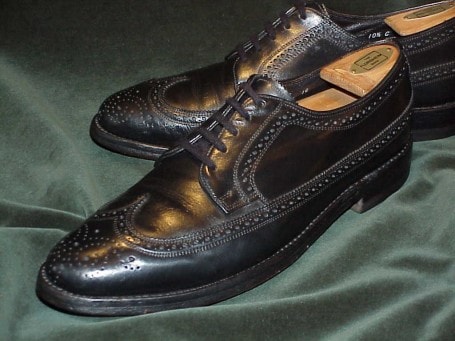 Vintage brogue derby
Vintage brogue derby 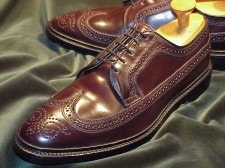 Allen Edmonds Shell Cordovan Full Brogue Derby
Allen Edmonds Shell Cordovan Full Brogue Derby 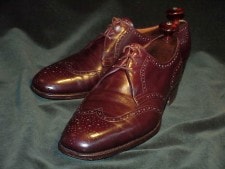 Vintage full brogue derby
Vintage full brogue derby
What to wear with Derby and Blucher?
Due to the fact that the variety of Derby shoes is very large, they can be worn both with an official business dress code and in a casual style. Classic black leather Derby or Blucher suits perfectly with any business suit except brown. Derby shoes in brown or burgundy are not compatible with all suits, so I recommend reading the article “How to choose shoes for a suit”.
Less formal cut-off derbies and brogues are suitable for business casual and smart casual dress code. The shoes go well with chinos and jeans. Try to combine classic colors: dark blue, brown, dark gray, dark green and you will not have any problems in choosing clothes for derby shoes.
Here are some more examples of current derby and blucher models that you can find in stores:
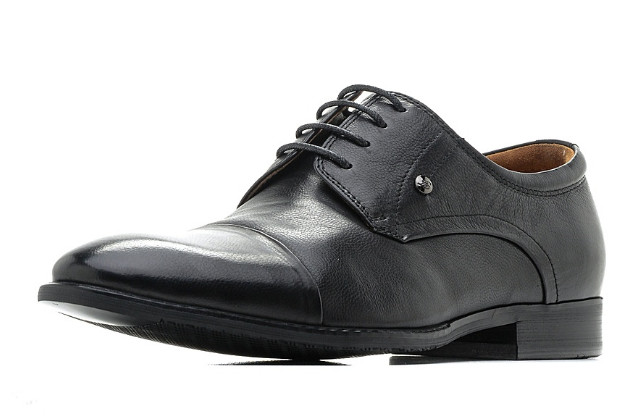 Derby Mascotte
Derby Mascotte
BUY AT PARTNER STORE
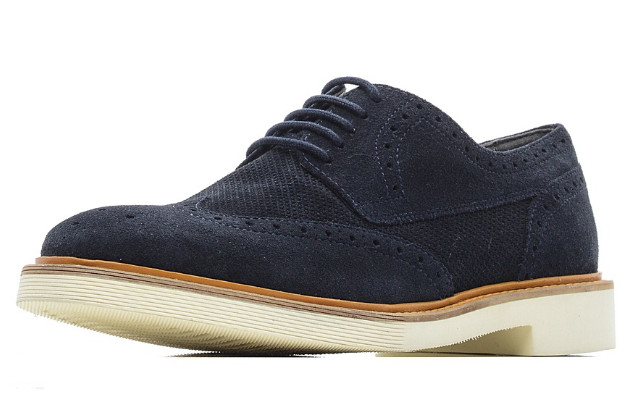 Derby Geox
Derby Geox
BUY AT PARTNER STORE
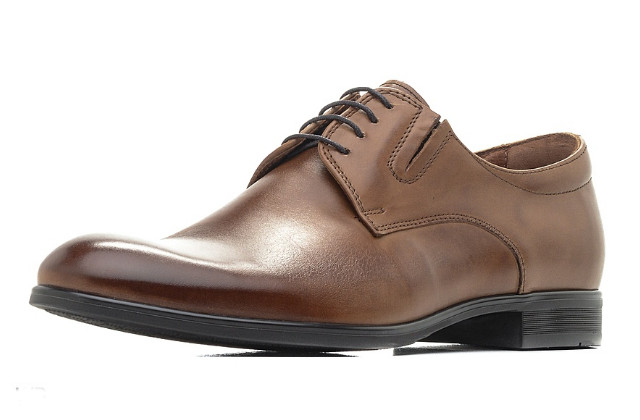 Derby Salamander
Derby Salamander
BUY AT PARTNER STORE
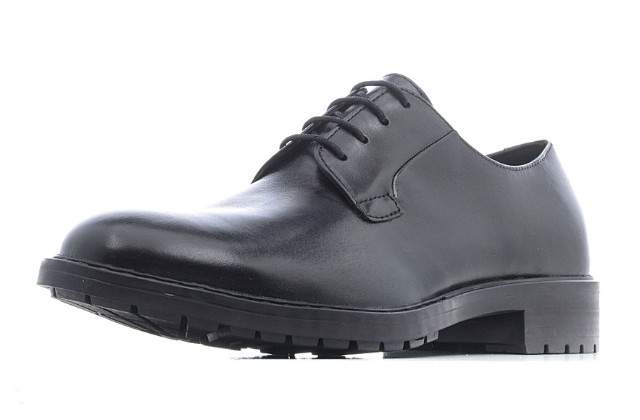 Geox Bluchers
Geox Bluchers
BUY AT PARTNER STORE
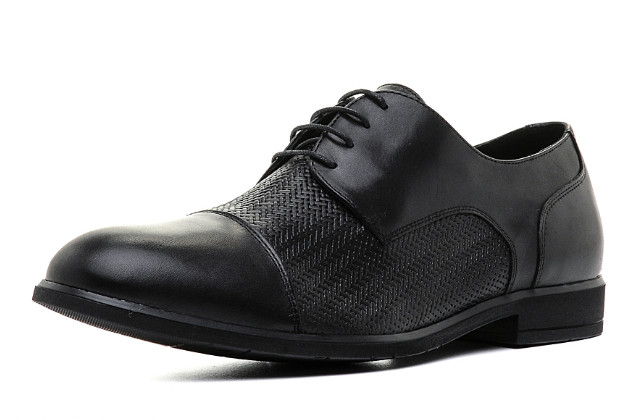 Derby Ralf Ringer
Derby Ralf Ringer
BUY AT PARTNER STORE
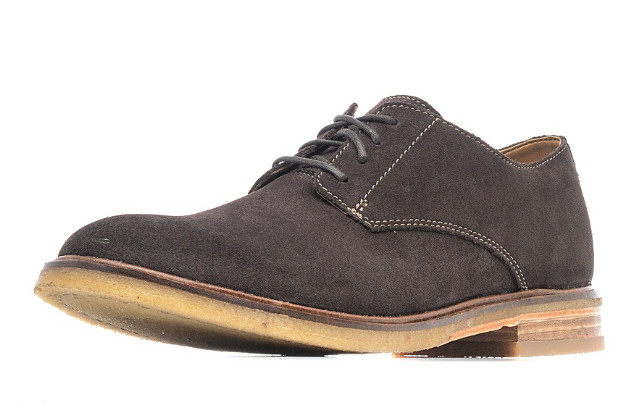 Derby Clarks
Derby Clarks
BUY AT PARTNER STORE

